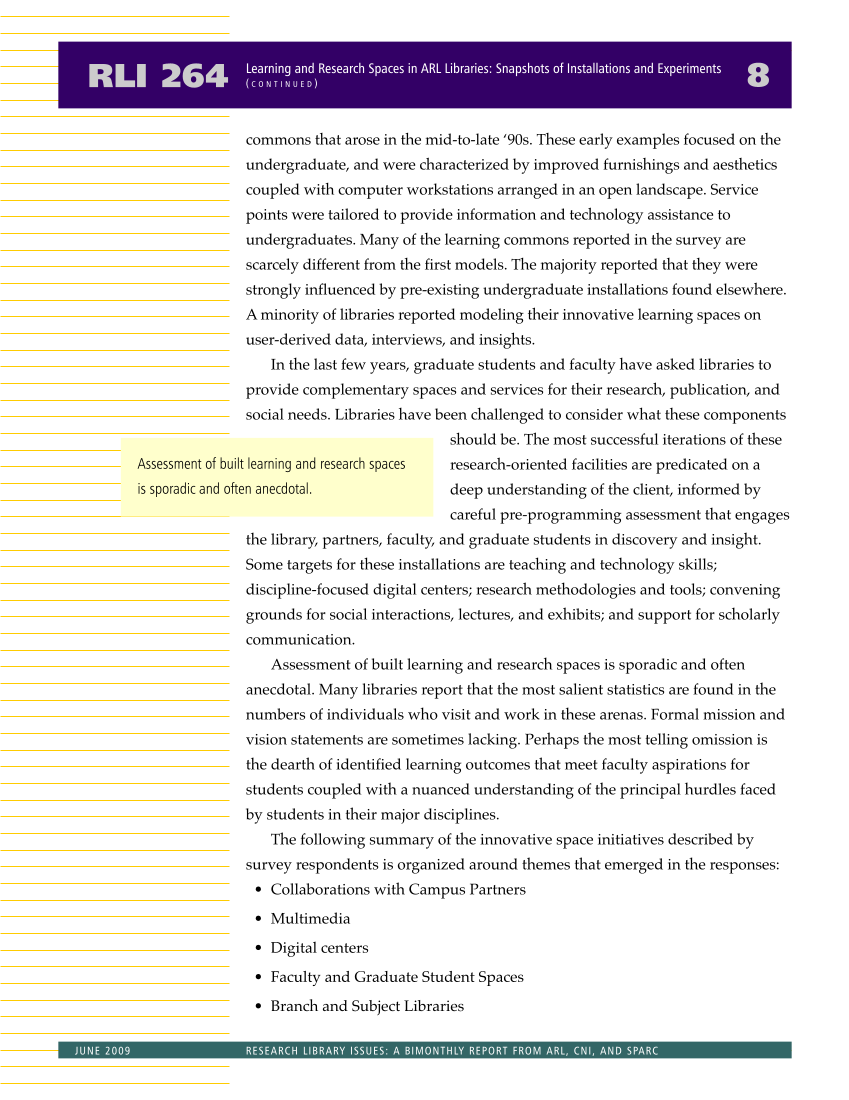commons that arose in the mid-to-late ‘90s. These early examples focused on the undergraduate, and were characterized by improved furnishings and aesthetics coupled with computer workstations arranged in an open landscape. Service points were tailored to provide information and technology assistance to undergraduates. Many of the learning commons reported in the survey are scarcely different from the first models. The majority reported that they were strongly influenced by pre-existing undergraduate installations found elsewhere. A minority of libraries reported modeling their innovative learning spaces on user-derived data, interviews, and insights. In the last few years, graduate students and faculty have asked libraries to provide complementary spaces and services for their research, publication, and social needs. Libraries have been challenged to consider what these components should be. The most successful iterations of these research-oriented facilities are predicated on a deep understanding of the client, informed by careful pre-programming assessment that engages the library, partners, faculty, and graduate students in discovery and insight. Some targets for these installations are teaching and technology skills discipline-focused digital centers research methodologies and tools convening grounds for social interactions, lectures, and exhibits and support for scholarly communication. Assessment of built learning and research spaces is sporadic and often anecdotal. Many libraries report that the most salient statistics are found in the numbers of individuals who visit and work in these arenas. Formal mission and vision statements are sometimes lacking. Perhaps the most telling omission is the dearth of identified learning outcomes that meet faculty aspirations for students coupled with a nuanced understanding of the principal hurdles faced by students in their major disciplines. The following summary of the innovative space initiatives described by survey respondents is organized around themes that emerged in the responses: • Collaborations with Campus Partners • Multimedia • Digital centers • Faculty and Graduate Student Spaces • Branch and Subject Libraries RLI 264 8 Learning and Research Spaces in ARL Libraries: Snapshots of Installations and Experiments ( C O N T I N U E D ) JUNE 2009 RESEARCH LIBRARY ISSUES: A BIMONTHLY REPORT FROM ARL, CNI, AND SPARC Assessment of built learning and research spaces is sporadic and often anecdotal.




























